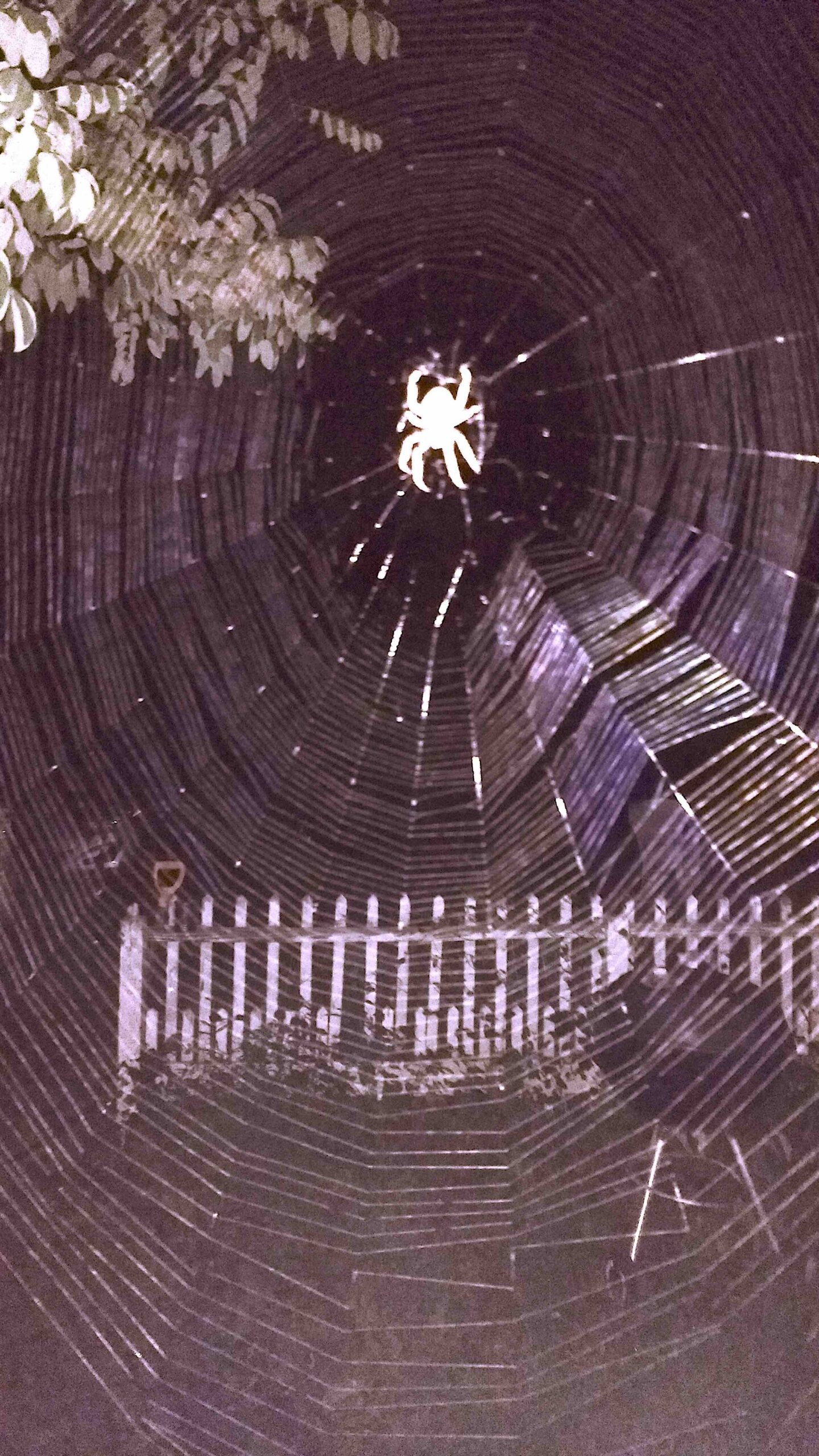Last night, a 1.5-inch writing spider, in the short span of three hours, managed to construct a web bridging a 12-foot open span of our back porch, including a huge sticky 3′ X 2′ web net of closely parallel strands designed for catching even small flying insects.
I nearly face-planted right on the middle where the spider was waiting patiently for its prey before I noticed it in front of me.
How on earth does such a small creature string its support strands across such a great distance? I’ve never witnessed the process, but since spiders don’t fly, it must, at an appropriate elevation above ground level, attach a support “cable” on one side of the opening, lay out the strand (which I’m told is stronger than steel, micro-ounce for micro-ounce) on the ground behind it and then pull the other end up to the proper attachment point, stretching it taught.
How is such a miraculous feat of engineering and advance planning even possible? How does the spider’s small body even contain enough webbing material to complete such a relatively massive construction project? And yet here’s the evidence before us!
Then when the multiple support ‘cables’ are all in place, the spider knows how to go right to the middle and begin spinning out the thinner sticky webbing that forms the net trap, all strands perfectly aligned without any pieces touching or crossing. The result is both a deadly effective trap and a thing of exquisite beauty, which I tried to capture here:

If we humans could show the patience, skill and determination of this little spider, think what we could accomplish as individuals and as a society.
